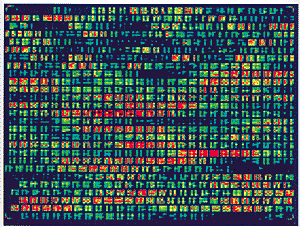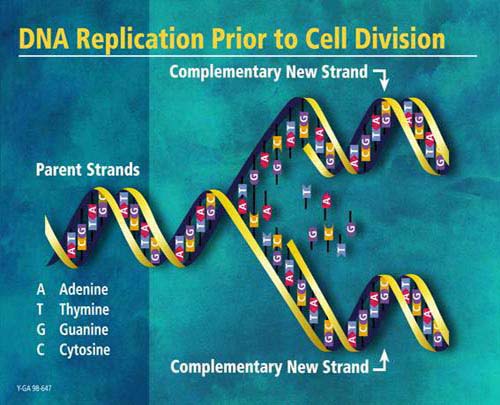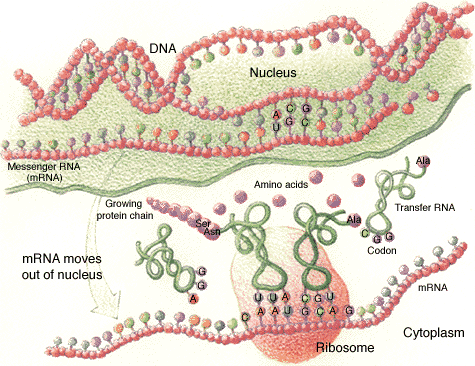INTRODUCTION
JBS Haldane, in his
prophetic essay "Daedalus, or Science and
Future" (1924) is the first man who foresees Future societies in which
biologists would invent a new kind of algae in order to solve hunger in the
world; and also in those societies "ectogenesy"
would be a common practice. He imagines "ecto-genetic"
children grown up and fed in artificial wombs (incubators) and modified by eu-genetic selection. In 1924 nobody knew anything about
the biochemistry of genes. He also raises the question that any
"biological invention" would be rejected as a "perversion",
but they would be accepted gradually (progressively) and it would also be
shocking the old ways of behaving and difficult to believe that those ways of
behaving were clearly upheld.
Haldane arose a question that
appeared in a Brave New World by Aldous Huxley later (1932).
In Brave New
World human beings are born and developed putting embryos into mechanical
wombs. Giving more oxygen to some embryos and hurting others deliberately they
can obtain people with different levels of intelligence. They follow clonation to produce more people.
After being born every breed (race) suffers a
brainwashing to accept their own fate (destiny) and value themselves more than
other races. When they become adults, with the use of drugs they get under
control. "Soma" of the drug of euphoria guarantees happiness to
everybody. This way they obtain "alpha", "beta",
"gamma", "epsilon".
Nearly 70 years after the edition of Brave New World we have progressed a
great deal (if we can call that progress). Nowadays it is still not possible to
grow up embryos in artificial wombs, but test tube fertilisation in a mother's
womb or in a hired mother's womb has become a quite common practice (deed).
Scientists believe that human beings will be created in laboratories in twenty
years.
Genetic revolution has been one of the most
spectacular revolutions during the 20th century, and it will be
highly developed during 2001. On June 26th, private and state firms
make public (disclose) that the first draft about human "genome" has
been finished. What do scientists really know up to now? Finishing the 1st
draft about human "genome" has led us towards
"post-genomic" period.
Discovering more about human "genome"
it's only the beginning. The most difficult has yet to come: we have to find
out genes within "genome", decode "proteoma"
and be able to know which function every gene has.
Genetic engineering, altogether with decoding the
"human genome" have led us towards a new period. Where can the limits
be set up? (Which are the limits?).
That nightmare, as many people say about Aldous Huxley Brave
New World, is already here, future is here. News like the clonation of Dolly the sheep, techniques of genetic
engineering applied to manipulation of food, "crazy" cows, xeno-transplanting? Shock us every
day. Reality overcomes fiction.
The subject Scientific news and
science fiction aims to involve pupils in the main scientific developments,
those which have a real incidence in our world, those which shock us, worry us
or give us hope.
We think it is really important for pupils to be
informed, to discuss and have an opinion about the main scientific and
technological discoveries they have to be critical and value or balance all the
good and bad things about those discoveries. On the whole biotechnological and
scientific development make us wonder about many subjects, which nowadays it is
difficult to have an answer for tall those questions.
Our descendants and we will have to look after the
good performance of those new discoveries. We hope we will be able to use those
new discoveries well for our own sake and for nature sake.
AIMS
The aims of Scientific News and Science fiction
are:
1. Let pupils be informed about present great
scientific and biotechnological discoveries and developments of those
discoveries.
2. Make pupils be interested and develop skills for
arguing, keeping a critical attitude and being able to develop their own
opinion about recent scientific news, and the application of those discoveries
within the fields of feeding, chemists, medicine, etc.
3. Make pupils become aware of the responsibility
we all have in relation to any discovery and its application. We all have to
look after the correct application of those discoveries in order to protect
humanity and preserve the planet.
METHODOLOGY
1. Each lesson starts reading a tale or seeing a
science fiction film, which deals with the subject to be studied afterwards.
After that there is a discussion about the tale or film.
2. The teacher explains the main ideas about each
subject.
3. Pupils have to look for and bring news from TV,
magazines, newspapers, dealing with the subject.
4. Some activities are put into practice in the
biology lab if the subject dealt allows.
5. Pupils have to present a debate: Pupils are
distributed into different groups for example, genetic engineers or scientists,
multinationals, ORG or people who are critical, journalists. That makes the
debate more interesting and stimulating. Each group has enough information in
order to support their ideas. Besides every group-continues looking for more
information about that subject with the help of Internet or other sources of
information such as magazines.
6. Debate session. Journalists introduce the
subject of that day and the people representing the different options to be
supported. Then each group takes their turn to speak. Each group explains their
ideas and opinions.
7. Meanwhile one group is explaining their theory,
to write down a question or any doubt they have.
8. When all groups have explained their ideas,
journalists act as moderators of the debate. So they are in charge of saying
whose turn it is and they also ask their own questions.
9. When the debate is over, journalists must
summarise the main ideas and conclusions.
10. Each group must summarise their own ideas,
translate them into English so that other countries which are interested in the
project could know what is going on.
11. After each subject (theme) there is a
self-testing sheet.
SYLLABUS (INDEX)
1. Human Genome.
2. Biotechnology. Clonation. Will human beings
be clonated in the future?
3. Genetic engineering.
4. Prions? "Crazy" Cows.
5. Transplantation? Xeno-transplantation. Cell culture
"Superhuman".
1. Human Genome.
Further reading:
ACTIVITIES
A.1.
THE HUMAN BODY.
- Contains about . . . . . . . . . cells.
- Within each cell there is a corpuscle called . .
. . . . . . . . . .
- Within the previous corpuscle there are two
complete series of . . . . . . . . .
(except "sperm" and "ovule" have only one
copy and "eritrocites"? have none)
- One series comes from . . . . . . . . . . . . . and
the other one from.
- Each series contains about . . . . . . . . . . .
. genes.
- Genes are only . . . . . . . . . % doesn't decode any
characteristic and it is called . . . . . . . .
A.2.
GENOME IS LIKE A BOOK, WHERE
- There are 23 chapters called . . . . . . . . . .
. . . . . . .
- Each chapter contains thousands of stories called
. . . . . . . . . . . . . .
- Each chapter is made of paragraphs called . . . .
. . . . . . . . . .
- With propaganda and advertisements in the middle
called . . . . . . . . . . . .
- Each word is written with letters from the
genetic alphabetic code called . . . . . . . . .
A.3.
CHEMICALLY GENOME
- It is a very big acid macromolecule called . . .
. ………………….. . . .
- That macromolecule is a chain of
"monomers" called . . . . . . . . . . . . .
- Each "monomer" is made of 3 sub-units
which are . . . . . . . . . …… .
. . . . . . . . . . .
. . . . . . . . . . .
- Each of these sub-units are made of letters from
the genetic alphabet code which are
. . . . . . . . . . .
. . . . . . . . . . .
. . . . . . . . . . .
. . . . . . . . . . .
- These letters are ruled by the law of completion,
let's say: . . . . . .
. . . . . . . . . . . .
. . . . . . . .. . . . . . . . . . .
- Following the Law of Completion write the
complementary chain of the one written below:
AACGTTGACGAT.
A.4.
What do scientists know up to now?
TACCGGGGAACCGTACTTATCACTGAAAATACCTTACTGCCGTAATTGTAATCCGGTAATTAGAGTCCGTGAA
TGCCATACAGTTCTTGTAAGAAGTCATGGTACTTATCTTTCTAAGCGTCTCCACTGTAATCCATTCATGCGGGA
AATTTCAGTGATACAGATAATCGTACTCAGTACTGCTGCTGAGTCCAGCACTTCCGGTAAGTGTAATCTGAAC
GCCGCTAATTACGTACGTAGCGCTATACGTAAAAAGGCCTTCCGGTAATTATACCGGGGAACTTACTGACTG
ACTTATCACTGAAAATACCTTACTGCCGGTAACTACTGCCGGTAATTAGAGTCCGTGAATGCCATACAGTTCT
ACTGGAAGTCATGGTACTTATCTTTCTAAGCGTCTCACTACTGTCCATTCATGCGGGAAATTTCAGTCAGATA
TCACTCTCAGTACTGCTGCTGAGTCCAGCACTTCCGGTAATTACTGTCTGAACTGCCGCTAATTACGTACGTA
CGCTATACAAAGGCCTTCCGGTAATTTACCGGGGAACCTTACTGACTGACTGGTACTTATCACTGAAAATAC
TACTGCCGGTAATTACTGCCGGTAATTAGAGTCCGTGAATGCCATACAGTTCTTATGGAAGTCATGGTACTTA
TTTCTAAGCGTCTCCACTACTGACCATTCATGCGGGAAATTTCAGTGATACAGATAATCACTGTCAGTACTGC
CTGAGTCCAGCACTTCCGGTAATTACTGTCTGAACTGCCGCTAATTACGTACGTAGCGCTATACACTGAAAG
CTTCCGGTAATTACCGGGGAACCTTACTGATCGTACTTATCACTGAAAATACCTTACTGCCGGTAATTGTATG
Pages and more pages of letters, the letters of the
genetic alphabet:
C: Citosine T: Timine A: Adenine G: Guanine.

On this page among plenty of DNA which is repeated
and without information, some genes could be identified (they are in italics).
AAAGGCCTTCCGGTAATTTACCGGGGAACCTTGTACTTATCACTGAAAATACCTTACTGCCGGTAAGAGTCCGTG
AATGCCATACAGTTCTTGTAAGAAGTCATGGTACTTATCTTTCTAAGCGTCTCCACTGTAACCATTCATGCGGGAA
ATTTCAGTGATACAGATAATCGTACTCAGTACTGCTGCTGAGTCCAGCACTTCCGGTAAGTGTAATCTGAACTGCC
GCTAATTACGTACGTAGCGCTATACGTAAAAAGGCCTTCCGGTAATTATACCGGGGAACCTTACTGACTGTACTTA
TCACTGAAAATACCTTACTGCCGGTAACTACCGGTAATTAGAGTCCGTGAATGCCATACAGTGAAGTCATGGTAC
TTATCTTTCTAAGCGTCTCCCCATTCATGCGGGAAATTTCAGTGATACAGATTCAGTACTGCTGCTGAGTCCAGCA
CTTCCGGTTCTGAACTGCCGCTAATTACGTACGTAGCGCTATACAAAGGCCTTCCGGTAATTTACCGGGGAAGTAC
TTATCACTGAAAATACCGTACTGCCGGTCCGGTAATTAGAGTCCGTGAATGCCATACAGTGAAGTCATGGTACTTA
TCTTTCTAAGCGTCTACCCATTCATGCGGGAAATTTCAGTGATACAGATAATCACTGTCAGTACTGCTGCTGAGTCC
AGCACTTCCGGTAATTACTGTCTGAACTGCCGCTAATTACGTACGTAGCGCTATACACTGAAAGGCCTTCCGGTAA
TTTACCGGGGAACCTTACTGATCTCTAATTCGGGTACTTATCACTGAAAATACCTTACTGCCGGTAAGAGTCCGTG
AATGCCATACAGTTCTTGTAAGAAGTCATGGTACTTATCTTTCTAAGCGTCTCC
However, there are snippets (fragments)within the genes without meaning (non-codified) called intrones,among them there are snippets (fragments) which
contain genetic information called exones
AAAGGCCTTCCGGTAATTTACCGGGGAACCTTGTACTTATCACTGAAAATACCTTACTGCCGGTACCGGTAATTAG
AGTCCGTGAATGCCATACAGTGAAGTCATGGTACTTATCTTTCTAAGCGTCTCCACTGTAATCCATTCATGCGGGAA
ATTTCAGTGATACAGATAATCGTACTCAGTACTGCTGCTGAGTCCAGCACTTCCGGTAAGTGTAATCTGAACTGCCGC
TAATTACGTACGTAGCGCTATACGTAAAAAGGCCTTCCGGTAATTATACCGGGGAACCTTACTGACTGTACTTATCA
CTGAAAATACCTTACTGCCGGTAACTCCGGTAATTAGAGTCCGTGAATGCCATACAGTGAAGTCATGGTACTTATC
TTCTAAGCGTCTCCCCATTCATGCGGGAAATTTCAGTGATATCAGTACTGCTGCTGAGTCCAGCACTTCCGGTAATT
ATCTGAACTGCCGCTAATTACGTACGTAGCGCTATACAAAGGCCTTCCGGTAATTTACCGGGGAACCTTACTGACT
GACTGGTACTTATCACTGAAAATACCGTACTGCCGGTAATTACTGCCGGTAATTAGAGTCCGTGAATGCCATACAGT
TCTTACTGGAAGTCATGGTACTTATCTTTCTAAGCGTCTCCAATCGGATC
It is as if you had thousands of pages like the
following one, what does it say?
Decode this page:
ABCDEFGHIJKLMNOPQRSTUVXYZQWERTYUIOPASDFGHJKLÑZXCVBNMÑLKJH
ABCDEFGHIJKLMNOPQRSTUVXYZQWERTYUIOPASDFGHJKLÑZXCVBNMÑLKJH GOODMORNINGEVERYBODYLORDMYSOULGOTHAPPYTHISMORNINGABCDEFI
ABCDEFGHIJKLMNOPQRSTUVXYZQWERTYUIOPASDFGHJKLÑZXCVBNMÑLKJH
ABCDEFGHIJKLMNOPQRSTUVXYZQWERTYUIOPASDFGHJKLÑZXCVBNMÑLKJH
Once you have decoded the page write it, adding the
necessary punctuation marks.
........................................................................................................................................
It is not that simple.
Human DNA has got the genes that make us be like we
are.
The genes do not even represent a 5% of the whole
DNA, the other 95% is DNA uncodified
("dustbin" DNA).
One of the tasks that have to come after sequencing
the genome is looking for genes and decode them.
In order to help you understand that try to look
for the gene in the following bit:
ABCDEFGHIJKLMNOPQRSTUVXYZQWERTYUIOPASDFGHJKLÑZXCVBNMÑLKJH
ABCDEFGHIJKLMNOPQRSTUVXYZQWERTYUIOPASDFGHJKLÑZXCVBNMÑLKJH HEISABCDETHEBRAVESTMANFGHXYZINTHEWORLDPORSTQWBUTHEISNOTJI
ABCDEFGHIJKLMNOPQRSTUVXYZQWERTYUIOPASDFGHJKLÑZXCVBNMÑLKJH
ABCDEFGHIJKLMNOPQRSTUVXYZQWERTYUIOPASDFGHJKLÑZXCVBNMÑLKJH
Take out the sentence and write it correctly.
..............................................................................................................................................
As you could see, the sentence with meaning, gene,
is broken into fragments without meaning or sense. Those fragments without
meaning are called "nitrons" The fragments
with meaning are called "exons". Some
"exons" gathered make the gene that
determines a protein.
A.6.
Up to now it was said: a gene = a protein. That
meant that a gene determined one protein. Sequencing the genome has changed
that belief and also the numbers totally.
So far it was believed that there was a total of 100.000 genes within the human genome.
Nowadays it is actually calculated only 38.000 genes.
A study about Human "Proteome" the
proteins of our body, allows us to make a calculation of about 200.000 to
300.000 proteins within our "Proteome". It is easy to realise that it
is impossible that every gene determines a protein. So it is accepted that
every gene can determine more than one protein, everything depends where the
reading of the "gene" or "sentence" starts, of the "introns" eliminated (removed), of the "full
stops", etc.
To understand this problem a bit
look within the fragment of the previous activity other possible
sentences.
ABCDEFGHIJKLMNOPQRSTUVXYZQWERTYUIOPASDFGHJKLÑZXCVBNMÑLKJH
ABCDEFGHIJKLMNOPQRSTUVXYZQWERTYUIOPASDFGHJKLÑZXCVBNMÑLKJH HEISABCDETHEBRAVESTMANFGHXYZINTHEWORLDPORSTQWBUTHEISNOTJI
ABCDEFGHIJKLMNOPQRSTUVXYZQWERTYUIOPASDFGHJKLÑZXCVBNMÑLKJH
ABCDEFGHIJKLMNOPQRSTUVXYZQWERTYUIOPASDFGHJKLÑZXCVBNMÑLKJH
...........................................................................................................
...........................................................................................................
A.7.
The genome is a very intelligent book because it
can photocopy and read itself. Photocopying is known as "REPLICATION"
REPLICATION is done by a property of the four bases, A always matches with T, and G always matches with C. So only one filament could be photocopied itself according to the Saw of Completion.

Reply this fragment:
CTTATCACTGAAAATACCTTACTGCCGGTAATT
......................................................................
A.8.
Reading a gene or "translation a gene or
"translation": How can you translate the language of genes into the
language of proteins? DNA is written with 4 letters or basis or nucleotides: A,
C, G, T.
Protein is a chain of amino-acids.
One order (DNA) determines another
order.
How was "genetic code" found in order to
translate from one language to the other?.
Hypothesis 1. Each base is corresponded by an
amino-acid.
There are only 4 bases and 20 amino-acids, then
"if a base determines an amino-acid it is not enough. There would be 16
amino-acids to be determined.
Hypothesis 2. "Two bases for each
amino-acid"
How many combinations can we get?
42
=
It is still not enough,
there would be 4 amino-acids to be determined.
Hypothesis 3. "Each amino-acid is codified with
3 bases"
How may variations could
be possible?
Calculate it?
43
=
As you can see the result is enough. This means
that each amino-acid is determined by a sequence of 3 bases. The group of three
bases is called "codo"? The genetic code
has 64 "codons". The order of "codons" determines the order of amino-acids.
A.9.
TRANSLATION

It is a process with two steps to be followed.
1. Transcription: DNA makes a copy of the gene
called RNAm.
RNAm uses the same bases, but one of them is different
it has Uracil (U) instead of Timine
(T). It also changes sugar which is R: "Ribose" (RNA) instead of D: dexoribose of DNA
Do the following transcription:
DNA:
TACAAACCACTATCAGATACT
RNA:...............................................
RNA messenger (RNAm) goes
to citoplasm where it is taken in microscopic
machines, the "factories" of proteins called "ribosomes".
2. TRANSLATION
Chart of the 64 "codones".
Look at the chart of codones
and look for the amino-acids corresponding to the following fragment of RNAm.
AUGUUUGGUGAUAGUCUAUGA
..................................................